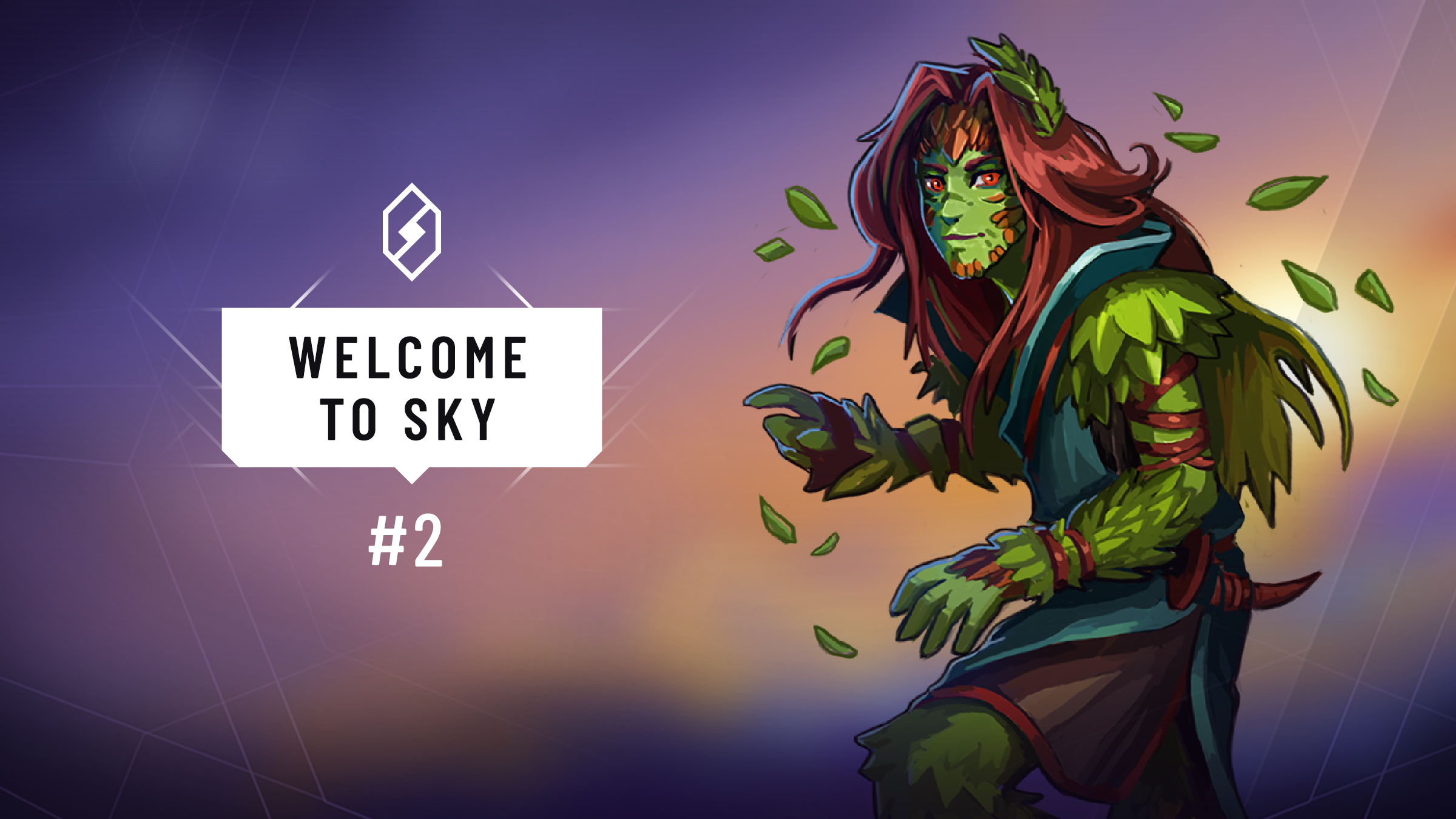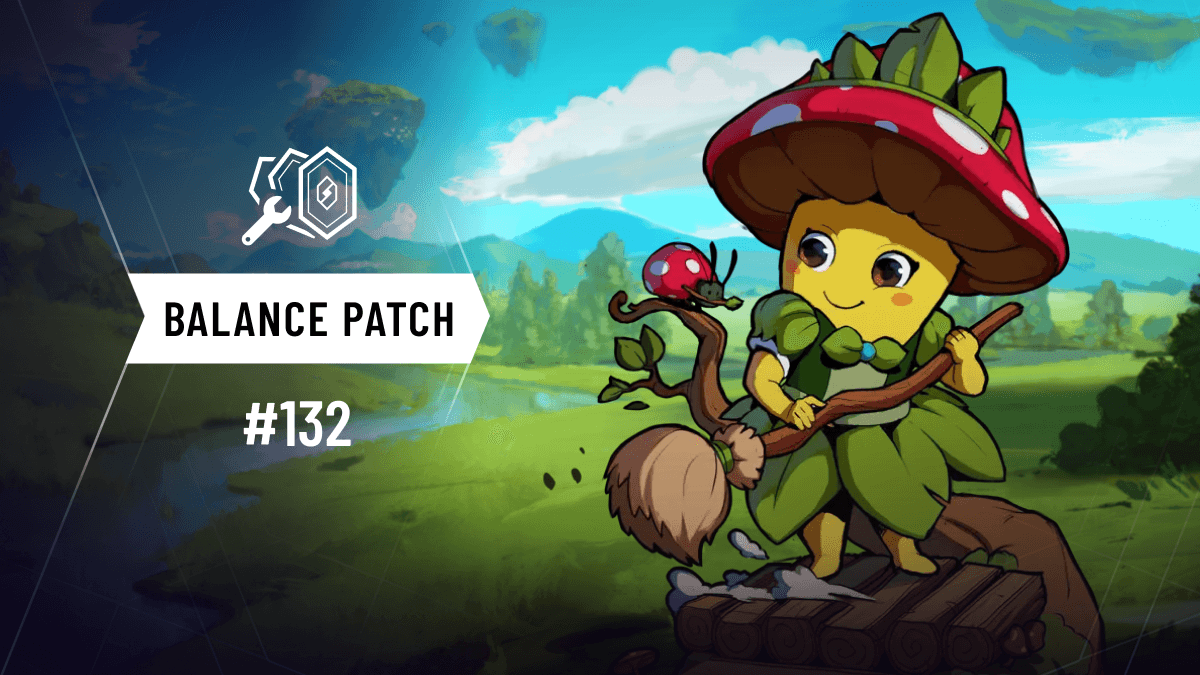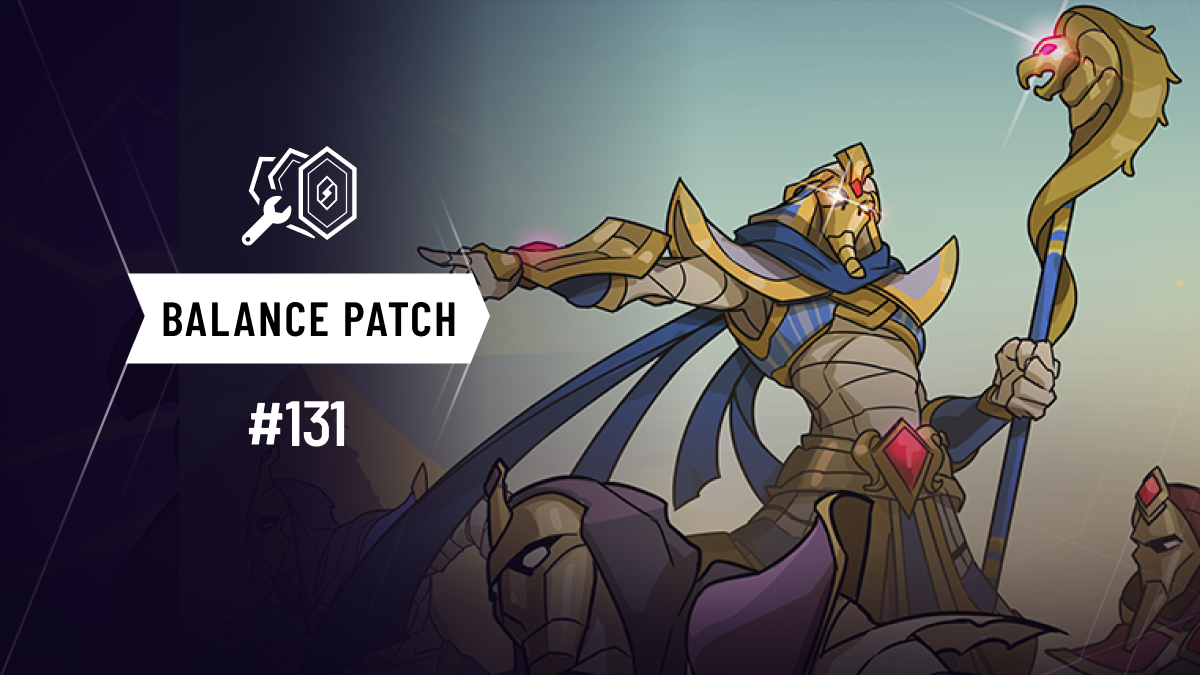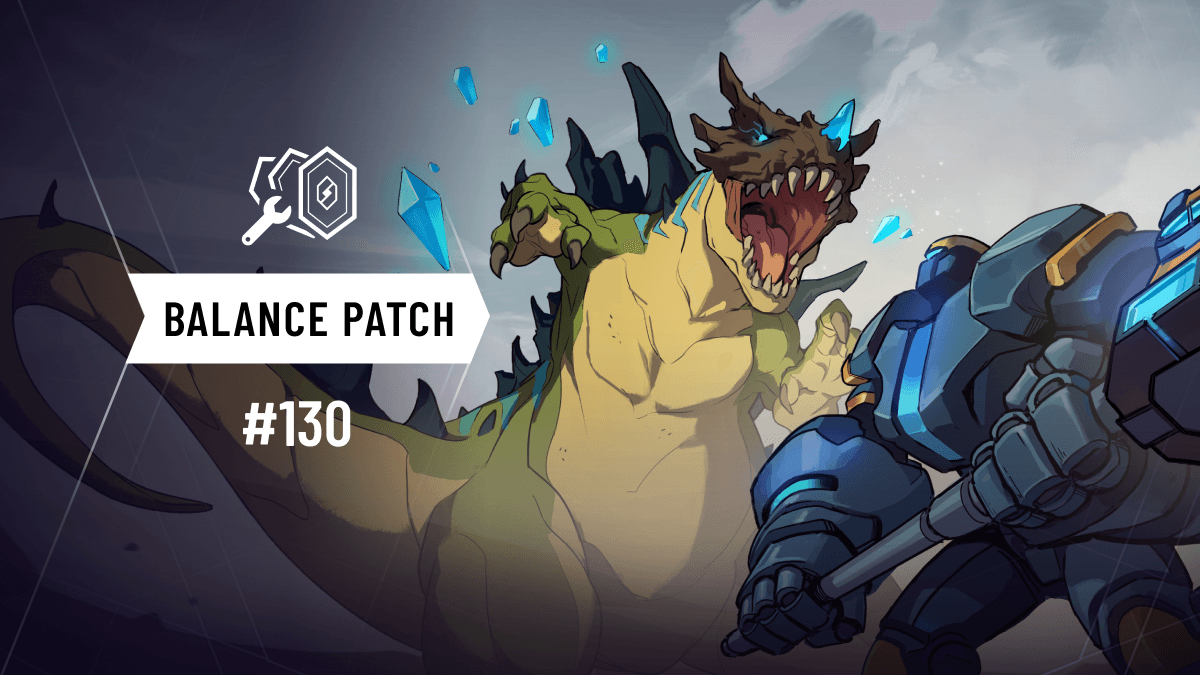Welcome to Sky #2: Player Actions

Welcome back to our introductory blog series on the gameplay fundamentals and strategy of SkyWeaver!
Today, we’ll take a look at the actions players can take during each of their turns in SkyWeaver, and how you can best to use them to succeed. There are a number of actions you can take during your turn in SkyWeaver. You can attack with your Hero and Units, play Units and Spells from your hand, and play Spells attached to your Units and Hero.
Post 1 - The Basics of SkyWeaver
Post 2 - Player Actions
Post 3 - Keywords
Post 4 - Enchantments
Post 5 - Prisms
Post 6 - Discovery Mode
Post 7 - Elements of SkyWeaver
Post 8 - Constructed Deckbuilding Part 1
Post 9 - Constructed Deckbuilding Part 2
Post 10 - Top Cards of 2019 Part 1
Post 11 - Top Cards of 2019 Part 2
Post 12 - Top Cards of 2019 Part 3
Post 13 - Introducing Intellect
Making Attacks
Attacking in SkyWeaver is fairly straightforward. You can click and drag any readied character you control, whether a Hero or Unit, and aim their targeting arrow at any enemy character to attack them.
Note that most Units enter play Sleeping (visualized by little “Zzz” over them) and cannot attack. At the start of each turn, all your characters (i.e. your Hero and Units) will Ready, allowing them to attack. After any character attacks, it will be unable to attack again until its next turn. In the example below, our Trydra (at left) and the opponent’s Axolotl are sleeping, while Puddo (at right) and our Hero are Ready and can attack, as shown by the green glow around them.

When a Unit or Hero attacks another, both characters will deal damage to the other equal to their power (displayed at their bottom left). Note that Heroes are the exception - they can only deal damage when attacking. If a character attacks the enemy Hero, that hero will not deal any damage back.
When you target a character for an attack, a preview will show you the amount of damage each character will take. A skull will also appear over any Unit(s) that will be destroyed as a result of the damage.
While you can normally attack whichever enemies you’d like, certain Keywords can modify what you can choose to attack.
If a player has a Unit with Guard, their Hero cannot be attacked, but their other Units can still be attacked normally. Guard Units are always placed to the Right of their Hero.
Conversely, a Unit with the Stealth keyword cannot be attacked until its controller’s Hero has been damaged in the same turn, “breaking” its Stealth and allowing it to be attacked. At the end of the turn, it will re-Stealth itself. Stealth Units are always placed to the Left of the Hero and to the Right of any non-Stealth Units.
The opposing nature of Stealth and Guard allows for strategic opportunities. For example - if you protect your Hero using a Guard Unit, it will protect your Stealth Units as well, since your opponent won't be able to damage your hero by attacking it. Additionally, if a Unit has Guard or Stealth, and gains the opposite keyword, it will overwrite the original, as a Unit cannot have both Guard and Stealth at once - if it gains Guard while it already has Stealth, it will lose Stealth, and vice-versa. We cover Keywords in more depth in their own post here - Post 3 - Keywords.
Playing Units
Units are the primary driving force behind combat in SkyWeaver, and form the core of most decks' offensive and defensive options.
During your turn, you can play any Unit(s) from your hand that you have enough Mana for, provided you do not already have six Units in play, as that's the limit for in-play Units. Most Units enter play sleeping, so you cannot attack with them the turn you play them, which is an important consideration when planning your strategy.
Some Units also have effects that activate when they come into play, known as Evoke and Play effects.
A Unit's Evoke effect will activate whenever it enters play from anywhere, whether the hand, graveyard, deck, etc.
A Play effect, on the other hand, will only trigger when you “Play” the Unit from your hand by paying its Mana cost. Many Play effects require you to choose a target when they are used.
Playing Spells
Spells are our second main card type. Unlike units, Spells have an immediate, one-time effect, then go to the Graveyard. There are two primary kinds of Spells - targeted Spells, and non-targeted Spells.
Targeted Spells require some kind of specific target to be played, - a Unit, a Hero, etc. These are most commonly removal Spells like Arcane Ray, or Spells that power up Units, like Wane Blade, but can also encompass Spells that need to choose a Hero to use their effects, like Rise!
In the example below, we can only target ourselves or our opponents Claw Bear or our Angler with Arcane Ray, as all other characters have attachments, and Arcane Ray cannot target characters with attachments.
Non-targeted Spells, on the other hand, are those which have global effects, and as a rule, can typically be played so long as you have enough Mana. This category frequently includes Spells that draw cards, like Treasure Chest, Spells that affect multiple Units at once, like Forest Fire, and Spells that summon Units, like Entwail.
In the example below, Forest Fire does not need a target to be cast. We simply drop it into the play area.
There can be certain circumstances where a non-targeted Spell will still be unplayable. In the example below, we cannot cast the Spell Etherwail if we do not have space on our board for at least one of the two Units to be summoned, since it would have no effect.
Playing Attached Spells and Removing Enchants
In the same way that you can cast Spells from your hand, you can also cast any Spell attached to your hero or a unit you control by grabbing the attached Spell icon and dragging it off of them. If the Spell requires a target, a targeting arrow will appear once the Spell is picked up, and you will be able to choose the target normally.
In addition to playing Spells, you can also pay Mana to remove Enchants from characters you control. These are a special type of attachment that usually has no immediate effect when removed from the Unit by paying its cost (though there are exceptions) but rather, the "reward" is simply the removal of the Enchant’s effects, which are often negative. We cover Enchants in more depth in their own post here - Post 4 - Enchants.
It is worth noting that, while most Units cannot attack the turn they are played, you can always play Spells or remove Enchants from your Units the turn they are played, so long as you have Mana to do so. It is often a good strategy to wait to play a Unit until you can also immediately pay for and use its attached Spell, because if a Unit is destroyed, its attached Spell will be lost alongside it.
Other Strategy & Gameplay Tips
Beyond the tangible actions you can take to advance the immediate state of the game, there are other strategic actions you can take to try to get the edge over your opponent. As these are strategic, rather than mechanical, you can preform them on your opponent's turn.
Inspect and Read Cards Carefully!
Mouse over any card in your hand, or any card in play, whether yours or your opponents, to get a close-up view of it. Especially for new players, its important to play close attention to your opponents cards and effects. Cards will also have descriptions for any Keyword or Ability they have, like Wither, Inspire, etc.
Check Graveyards and Your Deck!
At any time during your turn, or your opponents, you can view either player's graveyard, or your own deck by tapping on them. Checking graveyards can help you remember which cards you and your opponents have already used, while checking your deck can help you keep tabs on what options you still have left.
Avoid Overdrawing Cards!
Players can hold up to 9 cards in their hand. If a player would ever have more than 9 in hand, the leftmost card(s) in their hand will be sent back into their deck to make room for the new ones, and maintain the nine card limit. This can cause players to temporarily lose access to important cards, so managing your hand size to avoid these risks is an important consideration.
In the example above. Both players have 9 cards in hand. When we play Hydrate, (losing one card) both players will draw 3 cards, bringing us to 11 cards in hand, and our opponent to 12, and as a result, our 2 leftmost cards, (and our opponent's 3 leftmost cards) are returned to our deck. Its always important to consider how many cards you have in hand before drawing new ones!
That's all for this post, check back soon for more SkyWeaver gameplay tips and strategies!
Lethal Puzzle
See if you can figure out how to defeat your opponent using the game state presented below, in just one turn! Solution will be in the next post!
The solution to our last post's lethal puzzle is also right below! Congratulations to everyone who solved it!
To chat with me and the rest of the Horizon Games team & our community, join our Discord server! Subscribe to our subreddit to share your ideas, and follow the SkyWeaver account on Twitter if you just want to say hey!
If you haven't already, be sure to sign up to become a SkyWeaver now and to join our waitlist to be invited into our private beta and check out all these new features for yourself.
Check back here again soon, and to get notified on our latest blog posts, subscribe to our newsletter.

Recent Posts














